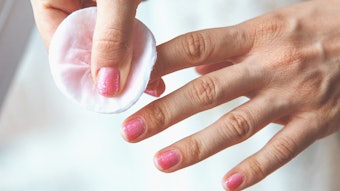The beauty industry can thank the consumer for continually driving innovation forward due to their insatiable appetite for products that improve the aesthetics of the human body. Some of the developments involve biologically active cosmetics, others more invasive chemical and surgical techniques. An increasing number involves beauty devices, which are oftentimes used in combination with cosmetic products. Device technology can provide the consumer with superior results during their beauty routines, and results that are not always achievable by the use of cosmetics alone. Beauty devices, however, involve entirely new regulatory and quality paradigms that may be foreign to practitioners in the cosmetics industry.
There is considerable global harmonization in the regulation of beauty devices. Depending on their purpose, some are regulated as medical devices. In the United States, the U.S. Food and Drug Administration (FDA) defines a medical device as "an instrument, apparatus, implement, machine, contrivance, implant, in vitro reagent, or other similar or related article, including a component part or accessory that is:
• recognized in the official National Formulary, or the United States Pharmacopoeia, or any supplement to them;
• intended for use in the diagnosis of disease or other conditions, or in the cure, mitigation, treatment, or prevention of disease, in man or other animals; or
• intended to affect the structure or any function of the body of man or other animals, and which does not achieve any of its primary intended purposes through chemical action within or on the body of man or other animals, and which is not dependent upon being metabolized for the achievement of any of its primary intended purposes.”1
It is this latter definition that is relevant to the cosmetics industry.
Determining Class and Approval Process
The regulatory structure for medical devices is based on an understanding that not all products are created equally. Globally, medical devices are broken up into three or four different classifications, depending on geographical location, and these classifications are differentiated by the risk of the product. For example, a simple bandage is considered a Class I medical device, and an implantable cardiac pacemaker can be Class III or IV, depending on jurisdiction.2 With each increasing class, the regulatory requirements are more stringent.2 This is a thoughtful model that could also be applied to cosmetics or drugs. In Canada, such a model has been implemented for nutritional supplements.
The FDA recognizes three classes of medical devices.3 Within this system, there are two regulatory pathways that allow for the marketing of medical devices. The first pathway is the 510(k) process. This is the most common gateway, and it works by: comparing a new device to one that has already been cleared by the FDA, and deeming the two devices are “substantially equivalent.”4 In doing so, the medical device is “cleared” by the FDA and can be brought to market.5 The other pathway is the premarket approval process (PMA). This option is the tougher path, and is similar in nature to a new drug approval. Clinical data also is often needed to support the claims for a medical device.
The premarket notification 510(k) application is not needed for most Class l devices but it is for some Class ll devices.6 If a notification application is needed, the product cannot be commercially distributed until the device is found to be “substantially equivalent” to a previous device.5 This notification process is generally required for Class ll medical devices and some Class lll instruments.7 Since Class lll devices are primarily used to assist or sustain life, a PMA is often required for Class lll devices due to the higher risk.8
ISO 13489 and Cosmetic/Medical
Devices that massage, irradiate or manipulate the skin to alter its structure or function, or underlying tissue, fall into the medical device category.9 For cosmetic companies venturing into this space, there is a completely different quality paradigm that governs medical devices. Instead of GMP/ISO 22716 for cosmetic products, medical devices adhere to strict ISO 13489 requirements.10 While there are similarities in these quality systems, there are also substantial differences. As one would expect, the Quality Management System for medical devices is much more extensive, given the design complexity and risk of these products.11 Production facilities used for the manufacture of consumer products or cosmetics will be in for a shock should they require meeting ISO 13489 standards. Even the design of the product will be governed by these strict ISO standards, and the documentation required is enormous.
But before the regulatory and quality system is outlined, a product must first be defined as a drug, medical device or cosmetic product. Although this may appear simple, it can be challenging as new innovative technologies are created. Cleansing brushes have been popular for many years now. Clarisonic’s Mia, for example, claims to lift dirt and oil by oscillating at 300 movements a second to work with the natural elasticity of the skin to remove the impurities. It is classified as a Class I medical device.
If a device is to be used in contact with the human body, but its primary function is aesthetic in nature, does that make it a medical device? Something as simple as topical gel is a great example. If the gel is used as a moisturizer, it is considered a cosmetic.12 However, once it is used for scar reduction, or in an ultrasound procedure, it becomes medical device.13 There is a legal distinction between cosmetics and medical devices, and in cases such as this, a highly trained eye is necessary in order to correctly classify and manage newly emerging technologies.
Medial Aesthetic Devices
The global market for medical aesthetic devices is expected to surpass $6.2 billion by 2019.14 These devices look to revitalize and tighten skin, soften or reduce wrinkles, and deliver a more youthful appearance.15 These products are approved by the FDA and Health Canada. The FDA recognizes them as Class ll devices if they are electrosurgical, cutting or coagulation devices, or accessories.16 These products are non-invasive and perform non-surgical tightening of the skin. Some general categories of aesthetic medical device products are as follows.
Radio frequency and microcurrent: Some aesthetic technologies operate by producing multi-polar radio frequencies in order to initiate the body’s healing process.15 From there, collagen forms and the production of new elastin fibers begins.15 Such a medical device holds value only in aesthetics by altering the structure or function of skin, but it does not diagnose or treat a disease.
In contrast, facial toning devices can be considered medical devices. For example, NuFace’s Trinity Facial Trainer works to prevent the onset of aging by producing microcurrent that stimulates ATP production, which in turn, promotes the production of collagen and elastin. Therefore, it is classified as a Class I medical device by the FDA.17
Light devices: Hair regrowth devices use both laser and LED light to treat androgenic alopecia, and some of these products are designed to be used at home.18 These devices work by re-energizing cells in hair follicles, and essentially to start the regrowth of hair.19 These products are Class ll medical devices, as defined by the FDA, and are approved devices by Health Canada.20 As an aside, the hair regrowth market is estimated at $3.5 billion in the United States, as hair loss affects so many men and women.21
Laser and LED light devices have been designed for other beauty issues, ranging from acne to wrinkles. Tria Beauty’s Tria Blue Light is a device that delivers a high dose of blue light to kill acne-causing bacteria. This is based on the knowledge that visible blue light in the range of 407-420 nm is effective in killing bacteria.22 Similar to hair growth devices, Tria Blue Light is considered a Class II medical device by the FDA.23
Indoor tanning beds remain popular, despite counter indication from the dermatological and cosmetic industries. These devices emit UV radiation to cause the skin tanning.24 This U.S. industry is valued at over $5 billion, and tanning beds are considered medical devices.25 Until recently, these devices were identified as Class I instruments but due to public outcry in Canada and the United States over their negative health effects, they were recently changed to Class II medical devices.24
Fat reduction: Fat reduction belts are devices that use electrical impulses to draw out muscle contractions.26 This process mirrors a real workout of the abdomen and oblique muscles. The current standard for fat loss is bariatric surgery, which is invasive and poses risks typical of surgical procedures. This device technology paves the way for new innovative fat loss products that can be marketed for household use. These products are FDA and Health Canada approved as Class II medical devices.27
Microdermabrasion: Microdermabrasion devices work to remove the outermost layer of dead skin to expose the underlying skin.28 Tiny crystals are inserted into the epidermis and the stratum corneum and then removed by suction. With this layer of skin gone, a new skin layer is revealed, helping to revitalize the skin and attain a more youthful appearance. These devices were originally classified as Class I medical devices, so some machines have 510(k) clearance.29 The FDA has since reclassified them as 510(k)-exempt.
Closing
Regulators face the ongoing challenge of finding the appropriate regulatory framework for new, innovative products. To do so, they must assess the risk/benefit ratio of a product. Many new medical device technologies have been developed that are not intended to improve human health, but to simply provide superior aesthetic benefits. For cosmetic companies interested in developing innovative device technologies, they must master entirely new regulatory and quality assurance paradigms. The good news is: there is a surprising amount of global harmonization in regulatory approaches to this fascinating category of products.
References
- Is The Product A Medical Device? FDA (Sept 12, 2014), www.fda.gov/MedicalDevices/DeviceRegulationandGuidance/Overview/ClassifyYourDevice/ucm051512.htm (Accessed Feb 25, 2015)
- Medical Device Regulation In Canada: A Primer, Medical Devices in Canada, Canadian Agency for Drugs and Technologies in Health (Jan 2007) www.cadth.ca/en/products/environmental-scanning/health-technology-update/health-technology-update-issue5/medical-device (Accessed Feb 25, 2015)
- Medical device regulations, classification and submissions, MaRS (Nov 5, 2012), www.marsdd.com/mars-library/medical-device-regulations-classification-and-submissions/ (Accessed Feb 25, 2015)
- 510(k) Submission Process, FDA (Aug 11, 2011), www.fda.gov/MedicalDevices/DeviceRegulationandGuidance/HowtoMarketYourDevice/PremarketSubmissions/PremarketNotification510k/ucm070201.htm (Accessed Feb 25, 2015)
- Safe Medical Devices in Canada, Health Canada (July 7, 2014), www.hc-sc.gc.ca/dhp-mps/md-im/activit/fs-fi/meddevfs_matmedfd-eng.php (Accessed Feb 25, 2015)
- Guidance on Medical Device Establishment Licensing and Medical Device Establishment License Fees (GUI-0016), Health Canada (Mar 25, 2013), www.hc-sc.gc.ca/dhp-mps/compli-conform/licences/directives/gui-0016-eng.php (Accessed Feb 25, 2015)
- H Thompson, An Engineer Takes on FDA Clearance and Approval Processes, Medical Device and Diagnostic Industry (Oct 15, 2012). www.mddionline.com/article/engineer-takes-medical-device-regulatory-process-part-ii (Accessed Feb 25, 2015)
- A Yellin, What Are 510(K) Clearance and Premarket Approval? Device Watch (Jan 9, 2009) www.devicewatch.org/reg/510k.shtml (Accessed Feb 25, 2015)
- DRAFT Guidance for the Risk-based Classification System, Health Canada (May 4, 1998) www.hc-sc.gc.ca/dhp-mps/md-im/applic-demande/guide-ld/risk5_risque5-eng.php (Accessed Feb 25, 2015)
- E Boer, Understanding and Implementing the Requirements of the ISO 22716 Good Manufacturing Practice Certification Standard for Cosmetic Products (GMP), SGS (Feb 2014) www.sgs.com/~/media/Global/Documents/White%20Papers/sgs-cosmetics-whitepaper-en-11.ashx (Accessed Feb 25, 2015)
- An Overview of a Medical Device Quality System, Health Canada, (Sep 8, 2014) http://laws-lois.justice.gc.ca/eng/regulations/SOR-98-282/page-5.html#h-11 (Accessed Feb 25, 2015)
- Facing Facts About Acne, FDA. (Aug 21, 2009), www.fda.gov/ForConsumers/ConsumerUpdates/ucm174521.htm (Accessed Feb 25, 2015)
- Professional Practice Guidelines and Policy Statements for Canadian Sonography, Canadian Society of Diagnostic Medical Sonography, www.sonographycanada.ca/Apps/Sites-Management/FileDownload/DataDownload/6945/CSDMS_ProfessionalPractice_E_/pdf/1/1033 (Accessed Feb 25, 2015)
- L Dubay, Global medical aesthetic devices market to reach $6.2B by 2019, says new report, BioOptics World (Dec 17, 2014) www.bioopticsworld.com/articles/2014/12/global-medical-aesthetic-devices-market-to-reach-6-2b-by-2019-says-new-report.html (Accessed Feb 25, 2015)
- MH Gold, ed, Update on Tissue Tightening, J Clin Aesthet Dermatol May 3(5) 36–41 (2010) www.ncbi.nlm.nih.gov/pmc/articles/PMC2922712/ (Accessed Feb 25, 2015)
- Premarket Notification [510(k)] Submissions for Electrosurgical Devices for General Surgery—Draft Guidance for Industry and Food and Drug Administration Staff, FDA (Mar 24, 2014) www.fda.gov/RegulatoryInformation/Guidances/ucm383206.htm (Accessed Feb 25, 2015)
- 510(k) Summary: NuFace Device, FDA. (Nov 27, 2007) www.accessdata.fda.gov/cdrh_docs/pdf7/k072260.pdf (Accessed Feb 25, 2015)
- RJ Lanzafame, RR Blanche, AB Bobian, RP Chiacchierini, A Fernandez-Obrego, and ER Kazmirek, The growth of human scalp hair mediated by visible red light laser and LED sources in males, Lasers in Surgery and Medicine 45(8) 487-498 (2013) www.ncbi.nlm.nih.gov/pubmed/24078483 (Accessed Feb 25, 2015)
- V Graff, Battling baldness: The potions that really work. V. (Oct 13, 2009), Daily Mail www.dailymail.co.uk/health/article-1218367/Battling-baldness-The-potions-really-work.html (Accessed Feb 25, 2015)
- A Castillo, FDA Approves iGrow, A Low-Level Laser Therapy Device That Stimulates Hair Growth In Men, Medical Daily (Sept 24, 2014) www.medicaldaily.com/fda-approves-igrow-low-level-laser-therapy-device-stimulates-hair-growth-men-304890 (Accessed Feb 25, 2015)
- A Hirsh, The bald truth about hair loss treatments: Most don't work, New York Daily News, (Sept 20, 2008) www.nydailynews.com/life-style/health/bald-truth-hair-loss-treatments-don-work-article-1.323979 (Accessed Feb 25, 2015)
- R Ubart, A Liovski, Y Nitzan and H Friedmann, A possible mechanism for the bactericidal effect of visible light, Laser Ther 20(1) 17-22 (2011) www.ncbi.nlm.nih.gov/pmc/articles/PMC3806074/ (Accessed Feb 25, 2015)
- 510(k) Summary, ATS-1 OTC, FDA (Jan 5, 2010) www.accessdata.fda.gov/cdrh_docs/pdf9/K090312.pdf (Accessed Feb 25, 2015)
- FDA tanning bed reclassification, American Academy of Dermatology, www.aad.org/members/practice-and-advocacy-resource-center/patient-health-advocacy/skin-cancer/indoor-tanning-device-reclassification (Accessed Feb 25, 2015)
- The Indoor Tanning Market, Looking Fit (May 18, 2009) www.lookingfit.com/articles/2009/05/the-indoor-tanning-market.aspx (Accessed Feb 25, 2015)
- M Knowlton-Davis, Does Wearing an Exercise Belt Help Reduce Stomach Fat? Live Healthy https://www.weekand.com/healthy-living/article/wearing-exercise-belt-reduce-stomach-fat-18072309.php (Accessed Feb 25, 2015)
- Electronic Muscle Stimulators, FDA www.fda.gov/MedicalDevices/ProductsandMedicalProcedures/HomeHealthandConsumer/ConsumerProducts/ucm142478.htm (Accessed Feb 25, 2015)
- N Alai, Microdermabrasion, MedicineNet (Jan 31, 2014), www.medicinenet.com/microdermabrasion/article.htm (Accessed Feb 25, 2015)
- S Warfield, Understanding State Board Regulation of Equipment, Skin Inc. (Jan 2012) www.skininc.com/spabusiness/regulations/136449513.html?page=3 (Accessed Feb 25, 2015)










